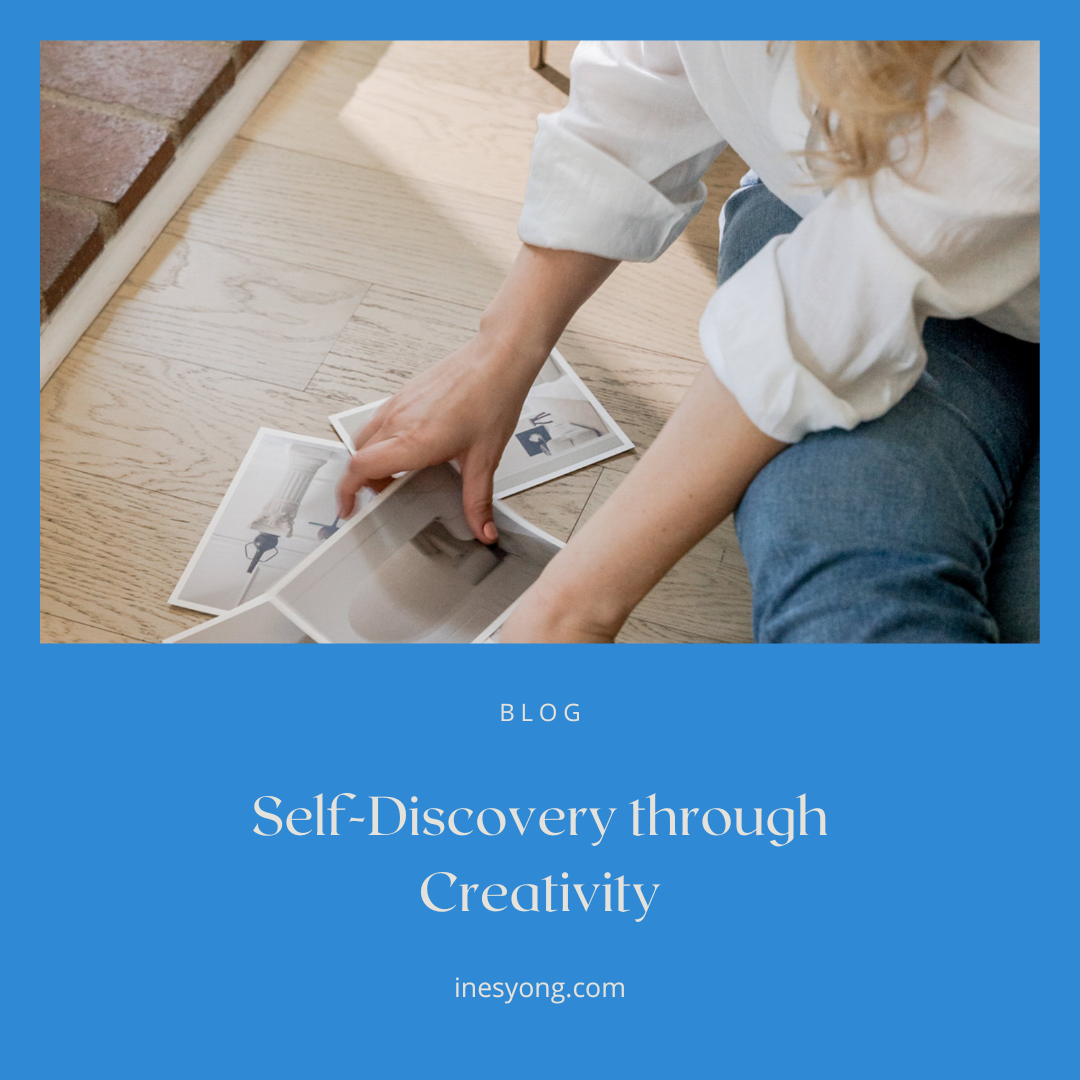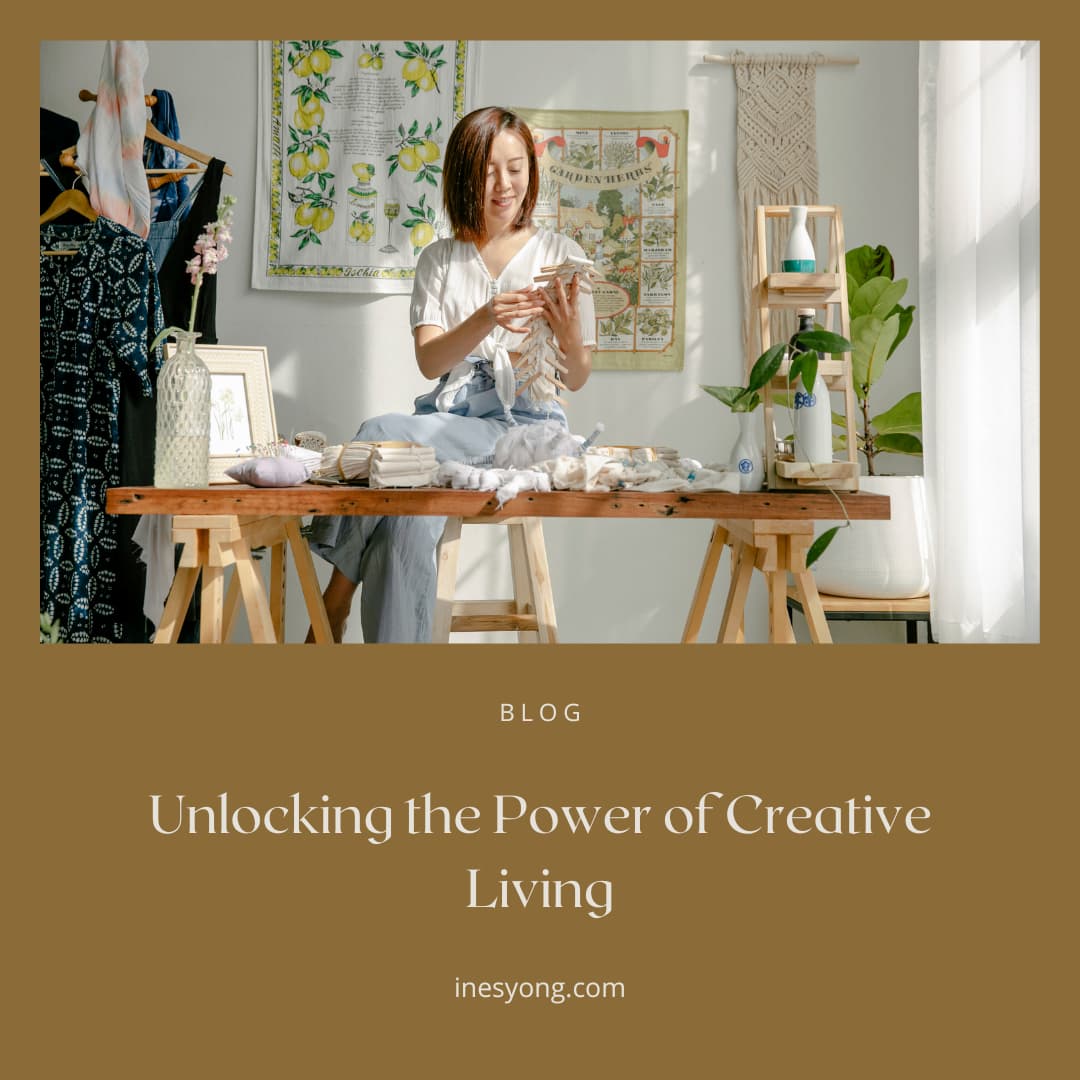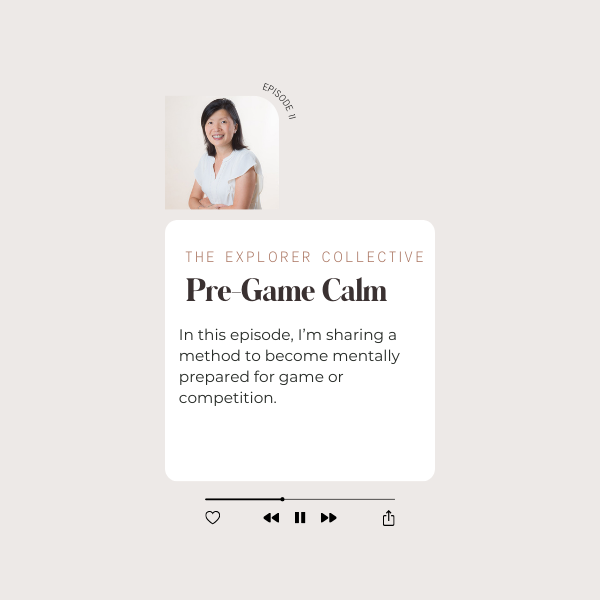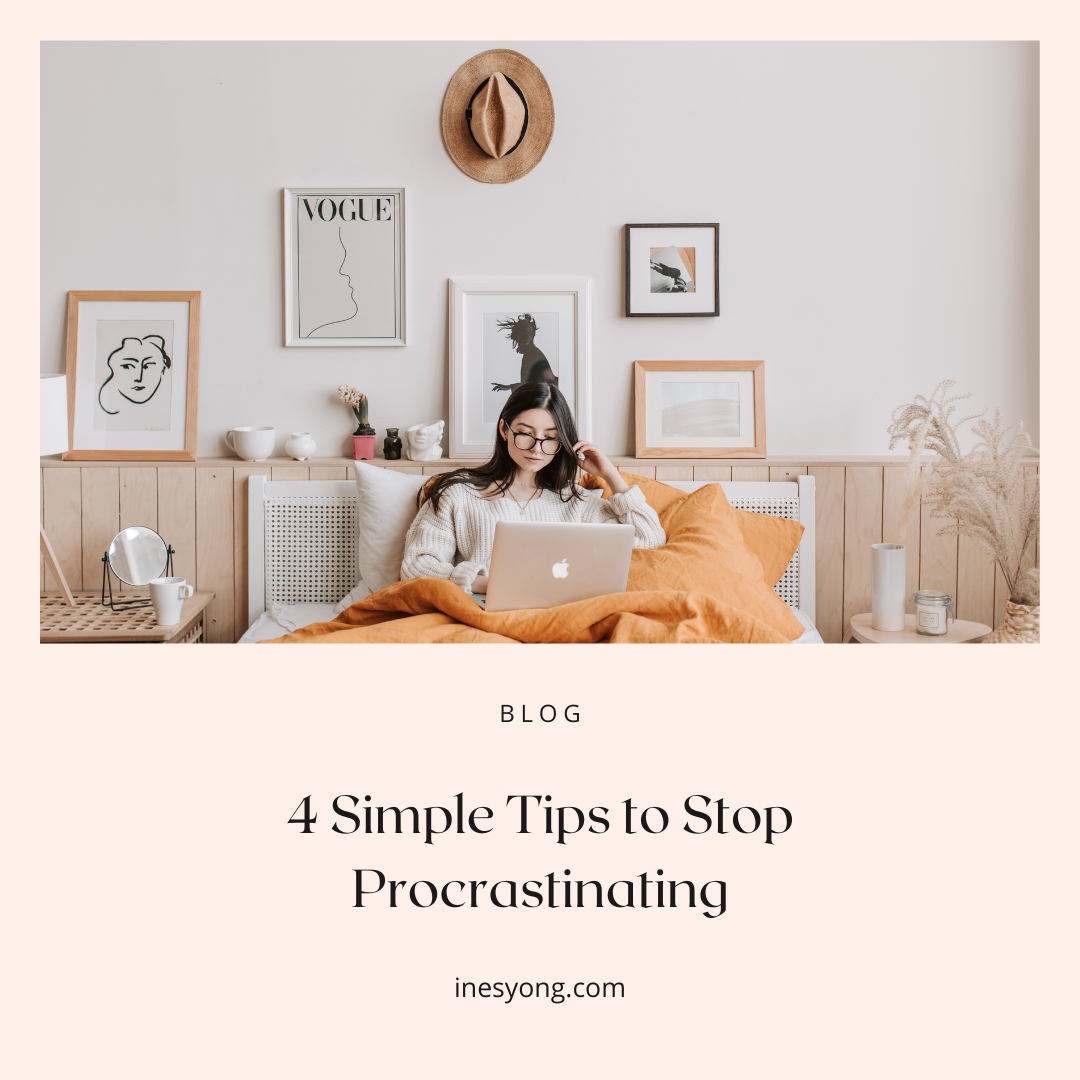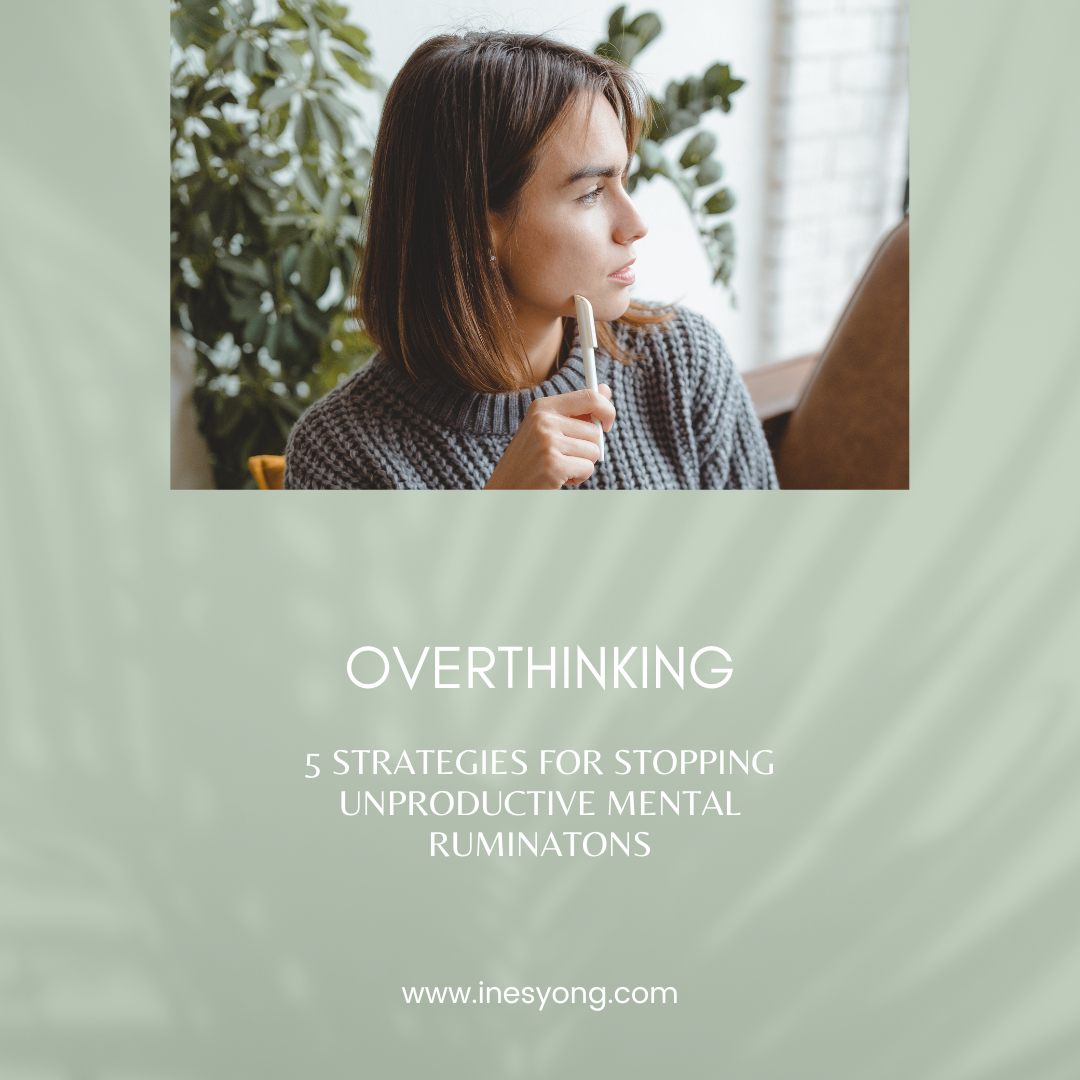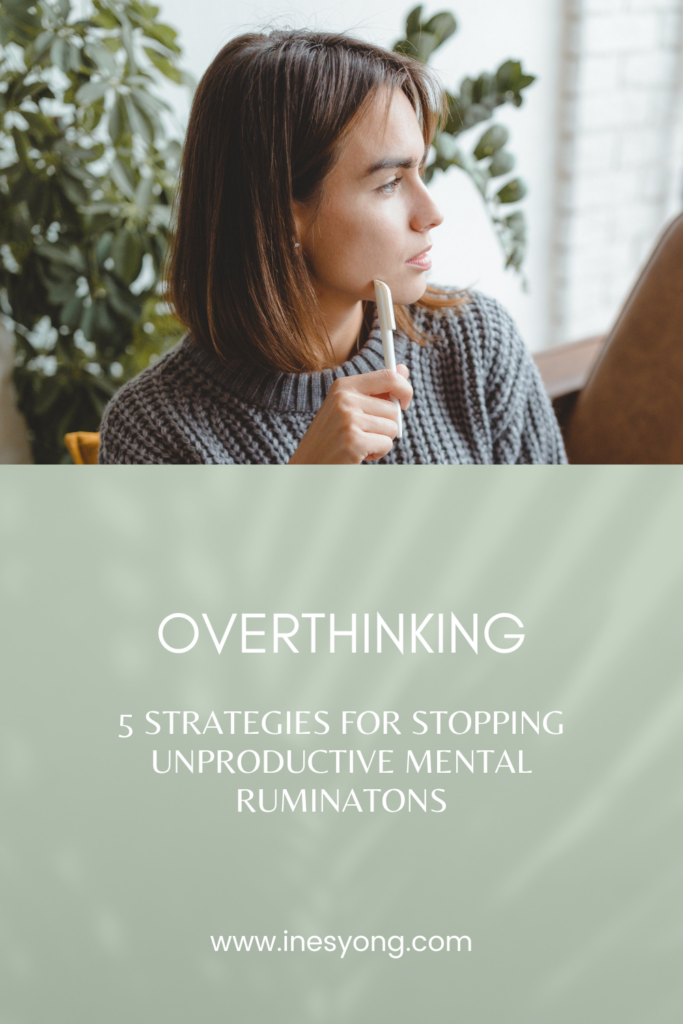
Madeleine was just about to step into the elevator and caught a glance at the group of people in it. There she was; her managing director was right there but didn’t meet Madeleine’s eye contact. “Oh dear, this is not a good sign; she’s ignoring me. Did she see me? Why isn’t she acknowledging me? She must have hated the report that I gave her last week. Anyway, I’m not good at presentations, unlike Isabelle, who could easily get the attention of others with her small talk. I would always be stuck in boring jobs! I’m not smart; the others are better than me. What if I start a conservation and ask my boss thinks about my writing? No, that’s ridiculous; she’ll get that I’m not confident. I’m tired of this job; I can’t stand handling another project….”
Notice one simple information that has turned Madeleine’s initial thought into a myriad of hypotheses. The deduction, reasoning and forecasting; all seemed pretty normal in day-to-day brain processing, but it could be mental rumination in disguise.
Since the Age of Enlightenment, we have believed and idealised the virtue of reason, as opposed to our supposedly harmful instincts. Western thinking pushes us to fight feelings, culture, and nature. But in fact, we discover that using reasoning as the only mode of functioning is not always beneficial to our mental health.
What is mental rumination or overthinking?
We tend to think that the strength of our analysis can solve our problems or that more control and deductions will translate those unpleasant thoughts into solutions.
The image of “mental rumination” gives you an idea of what it is about. It is the act of bringing up a thought about the past or the future and ‘digesting’ it repeatedly. It is often involuntary and usually repetitive. When it’s left on default mode, it becomes a habit.
When was the last time you thought: “I could have, I should have, it should be”? You were probably ruminating mentally.
Have you ever felt anxious while waiting for your exam results, worried about a project, or frustrated thinking of an unpleasant situation? Have you felt regret or unfairness in recalling a painful conversation and decoding every word, tone, and gesture? Have you had the impression not to have done or said what you should have, imagining different disastrous scenarios in the future?
How do you recognise ruminating thoughts?
Thinking about an unwanted situation and anticipating difficulties may seem like a normal thought process. Perceiving negative emotions is expected from these thoughts. But when our thoughts overwhelm us and take us away from reality, we enter into a world of ruminations and anxiety, making us believe that it is possible to control the future. Feelings of regret lock us into problems without solutions. These thoughts follow one another; the negative ideas feed in a loop and make us forget the search for a realistic solution. They isolate us from our surroundings. They trap us in negative judgments about others or ourselves, in a search for guilt, in anxious questioning or unproductive worries: he shouldn’t have done this, I shouldn’t have said that what will happen if ….?
We can feel that these patterns do not lead to anything good, but the persistence of these harmful habits shows that our good intentions and reasoning are insufficient to bring more calm.
What can you do about it?
There are several solutions to overcome this problem. Each one is effective in its way. They often overlap and complement each other to be used in diverse situations. I would also say adopt the right solution according to your personality. There is no single miracle solution to make these negative thoughts disappear instantly and effortlessly.
One word of caution, though. Some emotional disorders are so intense and disabling that they are pathological and require the help of an experienced therapist. Fortunately, this is not the case for most repetitive thoughts and ruminations in the general public, who respond well to the strategies suggested here.
1. Accepting your emotions
What I’m about to suggest may seem counterintuitive, but it is a natural solution. Accept your emotions. You may say, why accept an unpleasant situation such as having your thoughts in the loop? However, this is the first step before the other strategies. Why is that so? We need to know where we are right now and where we are heading to find the right direction.
Being conscious and accepting a feeling allows us to act relatively quickly before the thought loop starts. Tell yourself, here, this is what I’m feeling; I get it, and I continue to live and achieve my goals. From there, acceptance comes with a valuable act of love: taking better action and thinking.
Accepting a feeling, especially an unpleasant feeling, does not mean being passively resigned and submitted. It’s not about taking everything but accepting only what cannot be changed by you. Acceptance is the most effective method of emotional regulation.
It is impossible to control or fight against a feeling that comes up right before the appearance of voluntary thoughts. Emotions precede a mass of unconscious influences we do not even know exist. It is unproductive to eradicate any emotional feelings. Accept it by saying, “I recognise my fears and I move forward with that”, rather than “I go about as if I’m not scared” or “I blame myself for being scared”.
2. Feel it in your body
Acceptance in your body. Being aware of physical perceptions is a way of acceptance. As we mentioned before, acceptance saves you time and energy. It is unproductive to tire yourself by fighting against your emotions.

You want to break a vicious cycle of processing unpleasant information by your unconscious brain that causes subjective feelings of fear, anger, etc., which create conscious thoughts that feed on emotions and thoughts in circles.
It is, therefore, essential to be vigilant and intervene fast before it sets on an uncontrollable toxic spiral. The most effective and quickest way to disrupt the pattern is by being aware of how you feel in your body. Any expression of undesirable feelings can be felt in the body, and it is more obvious to spot them objectively than to find them in your head. Feel where they are and name them. Is it muscular tension in your neck? Is it your back, or do you feel tingling in your hands? Everybody feels differently, but we all feel it in our bodies.
Perceiving your physical feeling and accepting that allows you to stand back and observe complex thoughts being taken into a whirlwind of emotions. Very often, when mental rumination kicks in, thoughts produce a specific type of self-judgement on autopilot, such as:
- self-denial, degrading: I’m not able to do this, I suck, people don’t like me;
- abusive generalisation: it’s always the same story;
- dramatisation: it’s unbearable;
- blaming others: it’s all their fault.
Once the emotions (physical and feelings) are accepted, and the toxic judgments are evacuated, we will be willing to take a step back and move towards more constructive thoughts and behaviours.
We often have a vague perception of our feelings, emotionally and physically. Take a moment for yourself, and write it down in a journal. If writing is not your thing, draw. Writing (or drawing) has many benefits, first of all, to help clarify ideas. Putting words to an emotion or feeling is the first step towards its acceptance; writing forces us to face things. During a critical period, especially when ruminations appear, writing will have the advantage of helping us to settle down. The act of writing or drawing also helps to release tensions and release stress.
3. Action and distraction
Walking at the beach, trekking in the national park, visiting your favourite city, tending to the plants in your garden, sharing good moments with friends, playing the guitar and singing your favourite song…
What these seemingly random activities have in common is the free choice of an action we enjoy. In neurological terms, this behaviour feeds the brain’s reward circuits. When consciousness is entangled in unpleasant ruminations, it is natural to turn to engaging, pleasure-producing activity.
Mental ruminations are often linked to emotional tension but also inaction. Getting involved in a pleasurable activity makes it difficult to get sucked into overthinking. That physical or intellectual activity holds your attention and does not let you go back to mental ruminations. Remember that idleness is the ally of ruminations. Any action is relieving; it makes us feel good.
So, distract yourself! The possibilities are endless. You may choose a demanding activity such as trekking, a more relaxing hobby (reading, television, walking, crossword puzzles, arts and crafts) or a practical task (tidying up, cleaning, shopping).
Fortunately, there is an activity that combines immediate relief, distancing from toxic thoughts, short-term mood improvement, and long-term mental and physical health. This may sound like an ad for a magic pill, but it is based on multiple reliable studies. Imagine a drug capable of equivalent results, without side effects, a worldwide success, and people would do whatever it takes to get hold of this magic pill. The good news is this magic formula is freely available, without prescription and free of charge. What I’m talking about is exercise! It is the best remedy to push back mental ruminations.
The body-mind connection has been known since the dawn of time, and we have all noticed that exercise is good for our minds.
4. Choosing thoughts, reevaluation and reorientation
In the book “Je rumine, tu rumines…nous ruminons( comprendre et agir), Bernard Anselem explains the idea of cognitive reevaluation (or positive reframing). The principle behind this is to consider that thoughts are just thoughts; we can modify them. It is about exploring the different points of view and going into depth on those that seem the most favourable to us. In general, it is most effective to choose a perspective that is the opposite of our worries, reversing all the negative interpretations of that view.
The author suggests ways to reassess toxic judgements:
- Rationalisation: Correct a pessimistic interpretation by rationalising by identifying other, more positive options. One word of caution, it is unhelpful to have too many options.
- Stepping back: Take a step back from the unwelcoming information; imagine yourself in five or ten years.
- Projection: Turning to the future when we overthink about a person or an opportunity we lost
- Stop blaming: Look for solutions rather than faults
- Empathy: Put yourself in the other person’s shoes to understand their viewpoint.
- Environment: Putting yourself in a better environment
- Changing lens: Reframe a disappointing result by looking for external causes
- Memory: Choose to think of a delightful memory
- Role model: Imagining how someone we admire would have reacted
- Learning: Look for the positive side of an unpleasant situation, what we have learned, the new opportunities, etc.
“Many times what we perceive as an error or failure is actually a gift. And eventually we find that lessons learned from that discouraging experience prove to be of great worth.”
— Richelle E. Goodrich, Author
Choosing an idea is not enough. You must also commit to it. To do that, it is necessary to imagine, immerse in this different vision, and convince yourself that this other version is more relevant. It is also helpful to repeat this new point of view as often as needed at each invitation of our ruminations. It is not required to find a new alternative each time; studies show that the same version repeated on each occasion will be more effective. The repetition will gradually anchor this new belief in us, following the laws of all learning. It is a real training of the mind to sustain the improvements in the long run.
5. Practise relaxation
Breathing
Anselem, in this book, talks about anxiety-related stress and using physical relaxation to regulate emotional thoughts. Sources of anxiety create various and multiple ruminations. These trigger stress signs and prepare the body for action, such as increased heartbeat and breathing, muscular contraction and hormonal releases. Stress increases the activity of networks involved in the perception of negative emotions. Hence it increases vigilance to external threats, which increases negative memories. Memory and attention are thus overloaded and less efficient for the present, which explains why we often feel powerless.
Stress stimulates the front regions of the brain, which are active in evaluating emotions (like/dislike), evaluation of the external world, anticipation and reasoning. It, therefore, directly increases negative emotional thoughts and their tendency to be repeated. One of the most active ways to alleviate it is relaxation.
Body techniques have been known to directly enhance the effect of the body on the brain by selecting actions that soothe. This is done through accessible behaviours: breathing, muscle tension, body position and our attention to all these elements. Our ancestors have been noticing and developing these methods for centuries, long before we understood their mechanisms of action. However, recent advances have allowed us to understand and confirm their mechanism of action.
The most straightforward and accessible technique of soothing is one that reduces your breathing rhythm. The intentional slowing down of breathing sends the message of relaxation to your brain. The soothing effects will be noticed in 3 to 5 minutes. You’ll be surprised by how deeply our body links our emotions and thoughts.
Several advantages: the effect is fast, and it requires no technique, no talent, nor any particular knowledge. The only precaution for personalities with an anxious or hypersensitive tendency: the first test should be done in a calm, neutral environment before being used in an emotional situation. Indeed, some people feel uncomfortable when concentrating on their body sensations. Don’t be discouraged; try it out with concise sessions of habituation:
- Begin by breathing in slowly. Then breathe out slowly.
- Count calmly until 5 for each inhale and the same time for each exhale.
- In the beginning, you can use a timer to adjust the optimum time of 5 seconds (that means 10 seconds per cycle and six cycles per minute)
- Take the time to feel the air circulation in your nose, throat, and chest and feel the gentle movements of your abdominal area. Be conscious as you breathe out. Your body feels naturally relaxed.
With this exercise, you reconnect with your body, calm down your reticence and train without apprehension, first in a calm environment and then in a situation of slight stress. Apart from conditions that require immediate response, such as a surprise conflict or an emergency, this method can be used in all circumstances that generate a sense of fear or anxiety. For example, as a response to receiving unwelcoming news, preparation before public speaking, an interview or an exam, etc.
Another method I suggest involves muscular relaxation, which is used in some sophrology exercises. Athletic relaxation methods use the relaxing properties of conscious and voluntary peace of the whole body and mind. They can be used at times other than during unproductive contemplation episodes to calm the state of mind and reduce the recurrence.
Muscular relaxation
Edmund Jacobson, the founder of the progressive muscle relaxation technique, developed the method involving contraction and relaxation of different muscle groups and focusing attention on these areas of the body. He noticed that these manoeuvres send a calming message to the brain through the vagal nervous system.
Unlike the first technique, which is through breathing, muscular relaxation requires learning and practising these skills under the guidance of a therapist (or sophrologist) or with audio or video support. These skills can then be used any time, as soon as the onset of rumination is spotted.
When repetitive thoughts appear, after the acceptance stage, it is possible to replace the usual distraction activities with simplified muscle relaxation sessions using elementary exercises: become aware of areas of muscle tension (often the neck, back or hands) and practice small relaxation movements of the identified areas.
Make it a conscious habit.
There is no better way to reduce the anxiety of overthinking than practising these strategies as part of your daily habits. Use any of the five methods, singularly or concurrently, as soon as you spot the triggers before any thought blows up into an entire episode of mental rumination. You will see your life change.
Sally’s first public speaking engagement is a rather disheartening memory. The practices had gone well and her job had prepared her for the public speaking experience. But she began to feel some tension on her neck and sweaty hands. Her stress level was moderate. As the clock ticked away, she imagined more vividly of the scene where she was giving a speech in front of a hundred unknown faces. The speech was almost finished, but it went mechanically, without emotion.
Sally may not be an expert in emotional regulation and relaxation methods, but she could follow these five strategies. As the tension before the event increases, Sally could combine several ways:
- Acceptance “it’s normal to be stressed; let’s deal with it and go on.”
- Reevaluation: “it won’t be perfect, but what counts is to progress each time and give valuable information or insight to the audience.”
- Active distraction by making light-hearted jokes with friends and enjoying the moment
- Above all, she isolates herself for five minutes to practice a relaxing breathing exercise and to be in a state of mindfulness just before the beginning of the speech.
The story at the start of this post painted a picture of how we face reality head-on and our powerlessness to control impulses, emotions and reflections. We are not, however, powerless. It is possible to use our perceptions and our actions to progress towards more serenity. Knowing the mechanisms of thought production can help us manage mental ruminations.








